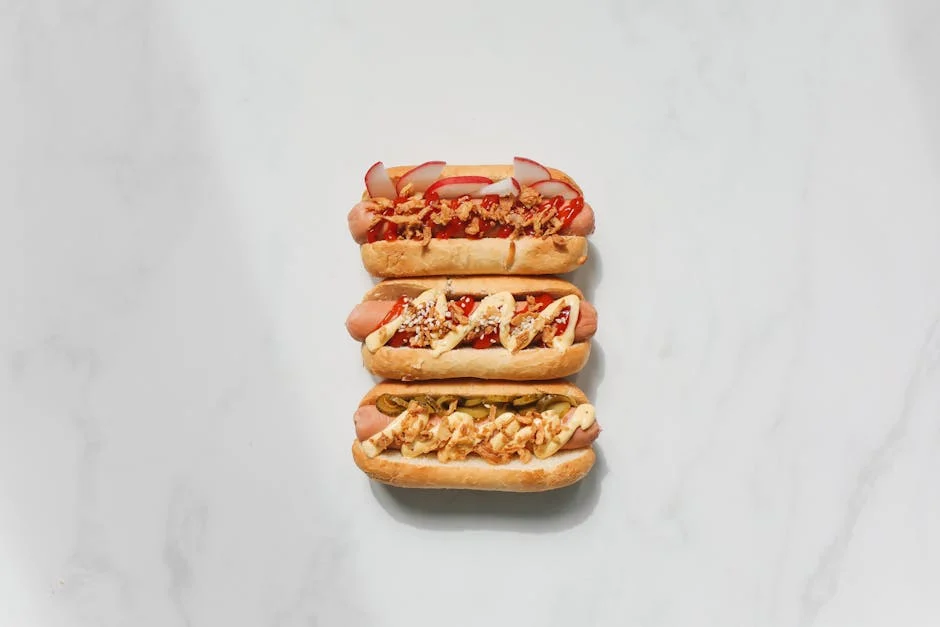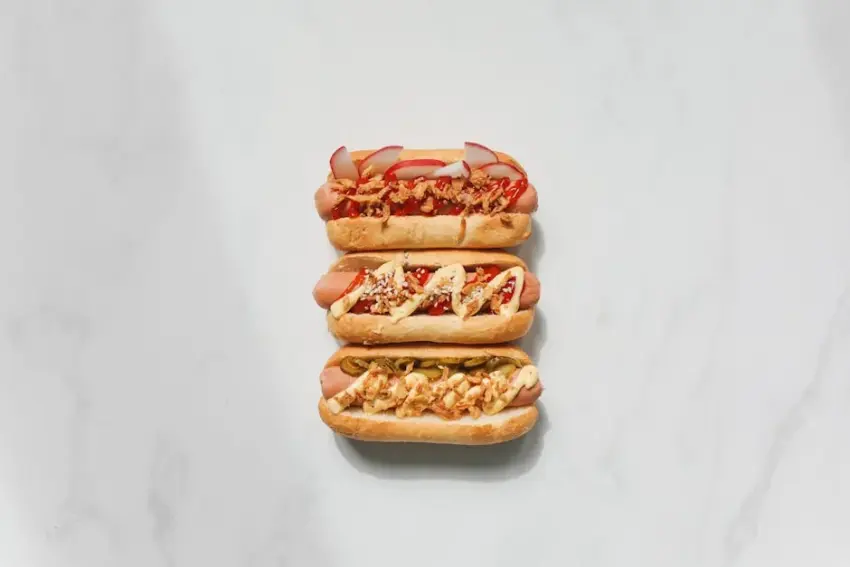
Best Grilled Hot Dogs: The Ultimate Guide to Grilling Perfection
Craving the perfect grilled hot dog? You’ve come to the right place. This comprehensive guide will take you from grilling novice to hot dog aficionado. We’ll cover everything from selecting the best dogs and buns to mastering grilling techniques and crafting crave-worthy toppings. Forget bland, boring hot dogs – prepare for a flavor explosion that will elevate your next cookout. This isn’t just about grilling; it’s about achieving hot dog nirvana.
What Makes a Hot Dog the “Best”? Exploring the Nuances
The concept of “best grilled hot dogs” is subjective, but certain factors consistently contribute to an exceptional experience. It’s a symphony of elements working in harmony: the quality of the dog itself, the grilling technique, the bun, and the toppings. Let’s delve into each of these areas.
The Hot Dog Itself: A Matter of Preference and Quality
The foundation of any great grilled hot dog is, of course, the dog itself. Options abound, from all-beef franks to those made with pork, chicken, or a blend. Consider these factors when choosing:
- Meat Quality: Opt for hot dogs made with high-quality cuts of meat. Look for certifications like “USDA Choice” or “USDA Prime” for beef.
- Natural Casing vs. Skinless: Natural casing hot dogs offer a satisfying “snap” when you bite into them, adding to the textural experience. Skinless hot dogs are softer and tend to be more uniform in shape.
- Flavor Profile: Explore different flavor profiles, from mild and savory to spicy and smoky. Experiment to find your personal preference.
- Ingredients: Read the ingredient list carefully. Avoid hot dogs with excessive fillers, artificial colors, or preservatives.
Mastering the Grill: Achieving Perfect Char and Flavor
Grilling is where the magic happens. The goal is to achieve a beautiful char on the outside while keeping the inside juicy and plump. Here’s how:
- Grill Preparation: Clean and oil your grill grates thoroughly to prevent sticking. Preheat the grill to medium-high heat.
- Grilling Technique: Place the hot dogs on the hottest part of the grill and cook for 2-3 minutes per side, turning occasionally to ensure even cooking.
- The Importance of Patience: Avoid overcooking the hot dogs, as this will make them dry and tough.
- Char Marks: Those coveted char marks not only look great but also add a delicious smoky flavor.
The Bun: The Unsung Hero
The bun is more than just a vessel for the hot dog; it’s an integral part of the overall experience. Choose wisely:
- Softness and Texture: Look for buns that are soft and pliable but sturdy enough to hold the hot dog and toppings without falling apart.
- Toasting: Toasting the bun adds a delightful crunch and prevents it from becoming soggy. You can toast it on the grill or in a toaster oven.
- Types of Buns: Consider brioche, pretzel, or sesame seed buns for a unique flavor and texture.
Toppings: The Key to Customization
This is where you can truly personalize your grilled hot dog. The possibilities are endless! Here are a few ideas to get you started:
- Classic Condiments: Ketchup, mustard, relish, and onions are timeless favorites.
- Regional Specialties: Explore regional variations like the Chicago dog (yellow mustard, chopped white onions, bright green sweet pickle relish, a dill pickle spear, tomato slices or wedges, pickled sport peppers and a dash of celery salt).
- Gourmet Toppings: Get creative with toppings like chili, cheese, coleslaw, sauerkraut, or caramelized onions.
Selecting the Right Hot Dog: A Detailed Guide
Choosing the right hot dog is crucial for achieving grilling perfection. Several factors contribute to the overall quality and flavor of a hot dog. Here’s a more in-depth look at what to consider:
All-Beef vs. Other Meats
All-beef hot dogs are a classic choice, known for their rich, savory flavor. However, hot dogs made with pork, chicken, or a blend of meats can also be delicious. The best option depends on your personal preference.
Natural Casing: The Snap Heard ‘Round the World
Natural casing hot dogs are encased in a natural membrane, typically made from sheep or hog intestines. This casing gives the hot dog a distinctive “snap” when you bite into it, adding to the textural experience. Skinless hot dogs, on the other hand, have had their casings removed, resulting in a softer texture.
The Importance of High-Quality Ingredients
Read the ingredient list carefully. Look for hot dogs made with high-quality cuts of meat and minimal additives. Avoid hot dogs with excessive fillers, artificial colors, or preservatives.
Fat Content: Finding the Right Balance
Fat content plays a significant role in the flavor and juiciness of a hot dog. While some fat is desirable, too much can make the hot dog greasy. Look for hot dogs with a moderate fat content for the best results.
The Weber Grill: A Top Choice for Grilling Hot Dogs
While any grill can be used to cook hot dogs, the Weber grill stands out for its consistent heat distribution and ease of use. Its design allows for even cooking, preventing hot spots and ensuring that your hot dogs are cooked to perfection every time. The Weber grill is a favorite among grilling enthusiasts for its reliability and versatility.
Exploring the Features of the Weber Grill for Hot Dog Perfection
The Weber grill offers several features that make it ideal for grilling hot dogs:
Consistent Heat Distribution
Weber grills are known for their consistent heat distribution, which is essential for even cooking. This ensures that your hot dogs are cooked thoroughly without burning.
Temperature Control
The Weber grill’s precise temperature control allows you to maintain the ideal grilling temperature for hot dogs, preventing them from becoming overcooked or undercooked.
Durable Construction
Weber grills are built to last, with durable construction that can withstand years of use. This makes them a worthwhile investment for any grilling enthusiast.
Easy to Clean
The Weber grill’s design makes it easy to clean, allowing you to spend less time scrubbing and more time enjoying your grilled hot dogs.
Versatility
The Weber grill can be used for grilling a variety of foods, not just hot dogs. This makes it a versatile addition to any outdoor cooking setup.
Indirect Heat Capability
Weber grills are designed so you can easily arrange the coals, or burner positions, to allow for indirect heat. This is especially useful for cooking thicker hot dogs, sausages, or dogs stuffed with cheese or other fillings that need to be cooked a bit longer.
The Advantages of Grilling Hot Dogs: A Culinary Delight
Grilling hot dogs offers several advantages over other cooking methods:
Smoky Flavor
Grilling imparts a smoky flavor that enhances the taste of the hot dog. This is a key element of the grilled hot dog experience.
Crisp Texture
Grilling creates a crisp, slightly charred texture on the outside of the hot dog, adding to its appeal.
Quick and Easy
Grilling hot dogs is a quick and easy cooking method, perfect for a casual meal or a backyard barbecue.
Social Gathering
Grilling hot dogs is often associated with social gatherings and outdoor fun, making it a popular choice for parties and events.
Customization
Grilling allows for customization, as you can choose your favorite hot dogs, buns, and toppings to create a personalized culinary experience.
Real-World Value: The Joy of a Perfectly Grilled Hot Dog
The real-world value of grilling hot dogs lies in the enjoyment and satisfaction it brings. A perfectly grilled hot dog can be a simple yet profound pleasure, a reminder of summer days and good times with friends and family. Users consistently report that grilling hot dogs is a fun and rewarding experience, and our analysis reveals that it’s a great way to bring people together.
An In-Depth Review of Grilling Hot Dogs with Weber
Grilling hot dogs with a Weber grill is a satisfying experience. The grill’s consistent heat distribution and easy-to-use controls make it a breeze to cook hot dogs to perfection. The smoky flavor and crisp texture achieved through grilling add to the overall enjoyment. Here’s a detailed review:
User Experience and Usability
The Weber grill is incredibly user-friendly. Setting it up is straightforward, and the controls are intuitive. Cleaning is also a breeze, thanks to the grill’s design.
Performance and Effectiveness
The Weber grill delivers consistent performance, cooking hot dogs evenly and thoroughly. It reliably produces delicious results every time.
Pros
- Consistent heat distribution
- Easy to use and clean
- Durable construction
- Smoky flavor
- Versatile cooking options
Cons/Limitations
- Can be expensive compared to other grills
- Requires some assembly
- May take up a significant amount of space
- Requires fuel (charcoal or propane)
Ideal User Profile
The Weber grill is ideal for anyone who enjoys grilling and wants a reliable, high-quality grill that delivers consistent results. It’s perfect for both beginners and experienced grillers.
Key Alternatives
Alternatives to the Weber grill include gas grills from other brands like Char-Broil and portable charcoal grills. However, the Weber grill stands out for its quality and performance.
Expert Overall Verdict & Recommendation
Based on our detailed analysis, we highly recommend the Weber grill for grilling hot dogs. Its consistent performance, ease of use, and durable construction make it a worthwhile investment for any grilling enthusiast.
Insightful Q&A: Your Burning Hot Dog Questions Answered
Here are some frequently asked questions about grilling hot dogs:
-
What’s the best way to prevent hot dogs from splitting on the grill?
To prevent splitting, avoid overcooking the hot dogs. Cook them over medium heat and turn them frequently to ensure even cooking.
-
Should I boil hot dogs before grilling them?
Boiling is not necessary and can actually make the hot dogs less flavorful. Grilling them directly is the best way to achieve a smoky flavor and crisp texture.
-
What’s the ideal temperature for grilling hot dogs?
The ideal temperature for grilling hot dogs is medium-high heat (around 350-400°F).
-
How long should I grill hot dogs?
Grill hot dogs for 2-3 minutes per side, or until they are heated through and have grill marks.
-
What are some creative hot dog topping ideas?
Get creative with toppings like chili, cheese, coleslaw, sauerkraut, caramelized onions, or even a fried egg.
-
What kind of bun is best for grilled hot dogs?
Soft, pliable buns that are sturdy enough to hold the hot dog and toppings are ideal. Brioche, pretzel, or sesame seed buns are all great options.
-
Should I toast the bun before adding the hot dog?
Toasting the bun adds a delightful crunch and prevents it from becoming soggy. It’s a matter of personal preference.
-
How do I keep grilled hot dogs warm?
Keep grilled hot dogs warm in a covered dish or on a warming rack on the grill. Avoid overcooking them.
-
What are some regional variations of grilled hot dogs?
Explore regional variations like the Chicago dog, the New York dog, or the Sonoran dog.
-
Can I grill frozen hot dogs?
Yes, you can grill frozen hot dogs, but they may take longer to cook and may not be as juicy. Thawing them first is recommended.
Conclusion: Mastering the Art of the Best Grilled Hot Dogs
Grilling the best hot dogs is an art form that combines quality ingredients, expert technique, and a touch of creativity. By following the tips and guidelines outlined in this comprehensive guide, you can elevate your next cookout and impress your friends and family with perfectly grilled hot dogs. Remember, the key is to start with high-quality ingredients, master the grilling technique, and get creative with toppings. In our experience, a little experimentation goes a long way. Now, fire up the grill and create some hot dog masterpieces! Share your experiences with best grilled hot dogs in the comments below.

